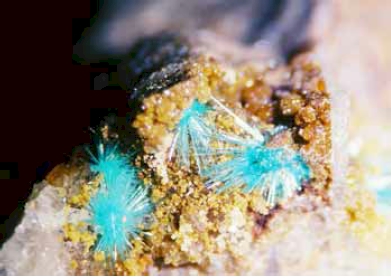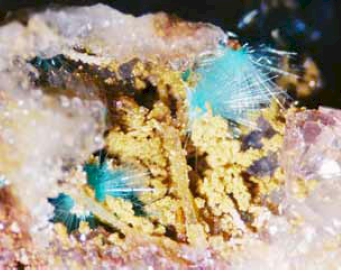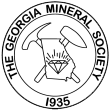Mixite
by
Dave Babulski, Ed.D.
("Tips and Trips", Vol. XXXV/9, September 2006, page 13.)
Greetings everyone, this month I would like to introduce you to a mineral that many micromounters refer to as “the blue-green fuzzies,” so called because the mineral occurs as radial groups of fine hair-like acicular crystals. This is the mineral mixite. On a list of rare minerals, mixite is certainly up near the top. You can count the number of mixite occurrences on the fingers of both hands. In the United States the arsenic bearing mineral deposits in the Tintic District in Utah are the most well known occurrence. Another well known mixite occurrence that yields excellent micromounts is the Majuba Hill Mine in Pershing County, Nevada. This rare mineral species has another distinction in that it is one of the very few minerals containing the element bismuth.
Chemically, mixite is a hydrated bismuth copper arsenate hydroxide. The mineral forms in the oxidation zone of metal ores that probably contained primary Bismuth Sulfides such as Emplecite or Bismuthinite. Mixite was discovered in 1879 in Czechoslovakia and is named for the Czech mining engineer, A. Mixa.
Color varies from emerald green to blue-green. The fine color and unusual crystal form plus its rarity makes mixite a highly sought after mineral species for micromount collectors.
Most mineral dealers have good specimens of mixite, but be prepared to pay a bit for the really fine specimens. Shown in the photographs below are specimens of mixite crystal spays in vuggy quartz from the Gold Chain Mine, 300 foot level, Mammoth, East Tintic Mountains, Juab, Utah. The specimens were photographed through the microscope at 30X with Kodak ASA400 color print film with a four second exposure.


Chemically, mixite is a hydrated bismuth copper arsenate hydroxide. The mineral forms in the oxidation zone of metal ores that probably contained primary Bismuth Sulfides such as Emplecite or Bismuthinite. Mixite was discovered in 1879 in Czechoslovakia and is named for the Czech mining engineer, A. Mixa.
Color varies from emerald green to blue-green. The fine color and unusual crystal form plus its rarity makes mixite a highly sought after mineral species for micromount collectors.
Most mineral dealers have good specimens of mixite, but be prepared to pay a bit for the really fine specimens. Shown in the photographs below are specimens of mixite crystal spays in vuggy quartz from the Gold Chain Mine, 300 foot level, Mammoth, East Tintic Mountains, Juab, Utah. The specimens were photographed through the microscope at 30X with Kodak ASA400 color print film with a four second exposure.



Copyright © Georgia Mineral Society, Inc.
